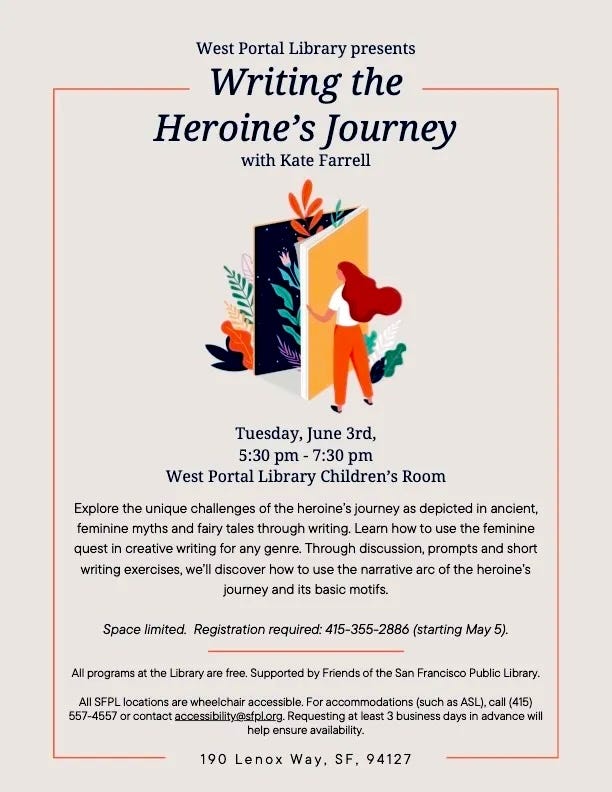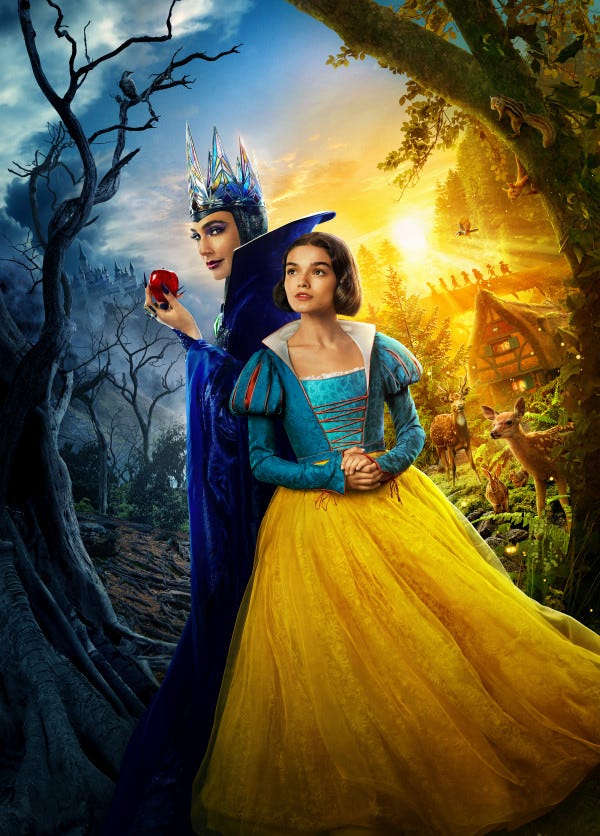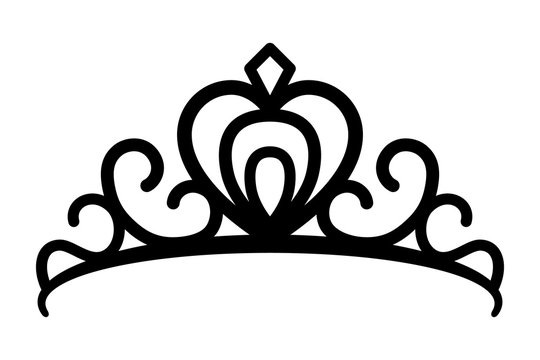Woven: Telling the Heroine's Journey
18th Edition of the Woven Newsletter, May 2025
This is a FREE monthly newsletter of a venture founded by Kate Farrell, Woven: Telling the Heroine’s Journey. Its goal is to explore the hidden terrain of the heroine’s unique quest found in the pre-literate, oral traditions—and how the age-old, foundational fairy tales, folktales, and myths can empower us, reframe our life stories, and inspire new creative work.
June 3rd Workshop
Writing the Heroine’s Journey with Kate Farrell
In Person: June 3rd | 5:30 – 7:30 pm
West Portal Branch, San Francisco Public Library
190 Lenox Way, San Francisco,, CA 94127
in partnership with Bookshop West Portal
Limited registration after May 5th | Free and open to the public
Explore the unique challenges of the heroine’s journey as depicted in ancient, feminine myths and fairy tales through writing. Learn how to use the feminine quest in your creative writing for any genre: fiction, nonfiction, memoir, and more.
We will discuss the benchmarks of the feminine journey that date back millennia to matriarchal cultures. Tapping into the foundational Slavic tale, Baba Yaga & Vasilissa the Brave, with prompts and short writing exercises, we’ll discover how to use the narrative arc of the heroine’s journey and its basic motifs in creative work.
Advance registration required:
https://sfpl.org/events/2025/06/03/workshop-writing-heroines-journey
Join us this month of May on Substack!
The Fairytale Heroine: Live and Create Her Journey
Online: Kate Farrell’s Substack: farrellk.substack.com/
Subscribe today for weekly posts! October 7, 2024 — present
This month we will go Underground on the heroine’s journey in Chapter Seven following the path of the Sumerian goddess in the “Descent of Inanna,” an epic poem dating from 3,000 BCE, and the jubilant Return of the heroine in Chapter Eight as told in well-known fairy tales.
It is the time of the year that the return of the light is celebrated in the rites of spring, renewal, the seed time of the harvest.
The Fairy Tale Heroine publishes its posts as it is written! Readers will be able to influence its content in how they engage to each post’s prompts with their comments and suggestions. This exciting book is an interactive, practical guide to the ancient foundational tales of the feminine quest with creative tools that translate their elements to our lives and times.
Fairy Tale Heroine’s Journey: The Graphic*
We’re excited to reveal the Woven circular graphic showing the progress of the heroine’s journey based on universal, repeated motifs in ageless fairy tales.
*Concept by Kate Farrell and graphic by content creator, Christine
Most have seen the circular graphic for the hero’s journey made famous by Joseph Campbell based on his concept of the “monomyth” or a synthesis of worldwide heroic myths.
In contrast, the three basic stages of the Fairy Tale Heroine’s journey are:
Entanglements and Jealousies
Into the Wilderness: Escape and Initiation
Return: Recognition and Self-Attainment
The fairy tale motifs include archetypal characters within the feminine realm: a kind, persecuted maid, wicked stepmother and stepsisters, magical helpers, crone/godmother, mentors and allies.
Stripping away the many versions of the fairy tale heroine’s journey down to its core theme, it is: An innocent maid, suffering the cruel enmity of female antagonists, must flee into an unknown wilderness, but with the aid of magical creatures, through trials and the initiation of a crone/godmother/shaman, is eventually recognized for her inner worth at her return.
Over the last few years, giving workshops in person and online, writing the interactive book on Substack, Kate Farrell has benefitted from student insights and comments, as well as extensive research, to create this graphic for the Fairy Tale Heroine’s Journey. She is excited to share it now and eager to hear your reactions!
Disney’s 2025 Snow White – Movie Review
By Kate Farrell
Snow White: The Origin Story
The age-old, foundational fairy tales of the heroine’s journey survived by word of mouth over millennia, often from the matriarchal cultures of Old Europe and the Near East. Scholars and storytellers discovered the heroine’s tales in fragmented versions collected from the “folk,” mostly throughout Europe and the Middle East, transcribed, published, and translated in the 18th and 19th centuries.
The heroine’s journey is essentially different from the hero’s: Feminine quests progress as the heroine frees herself from the entanglements of relationships as she develops male aspects to create a more conscious role as an individual in her own right.
Motifs in these archaic tales are similar to the well-known Cinderella fairy tale and are told by peoples of widely divergent cultures. The Motif Index of Folk-Literature, the Aarne-Thompson-Uther tale-type index that classifies folk tales, designates the Cinderella tale’s cluster of motifs as ATU 510A. It is said to be the most told story on Earth with some of its earliest versions dating from the New Stone Age (7,000 – 1,700 BCE).
Fairy tales survive over time and geography, interpreted by many cultures, because they are NOT literal. They speak in a symbolic language, the archetypal language of dreams that arise from the universal, collective unconscious. This imagistic language resonates because we know its truth even if we don’t consciously understand it.
Don’t Mess with Motifs!
One of the thousands of versions of the feminine quest is the German fairy tale of “Snow White” in which the loving mother who longingly wished for a daughter dies in child birth. She is replaced by the envious, vain, predatory stepmother who seeks to murder her stepdaughter when Snow White comes of age and is seen as more fair than she. It is a deadly competition of feminine beauty—an ongoing theme in the heroine’s journey—famously fought in this epic tale with the all-seeing mirror as arbiter.
These are the bare bones of the story, its central conflict fought in the feminine psyche: the question of the nature of beauty, female competition, vanity, jealousy among women and how to resolve it. It’s already clearly relevant, profoundly “woke,” since these issues are present in modern women’s lives—perhaps even more so today.
So, don’t mess with the symbolic layer of an archetypal fairy tale that has survived millennia. Its motifs are drawn from the essential stuff of humanity: our dreams, fears, our shadow side and our brilliant beauty.
Motif Hit and Miss
Disney’s 2025 live action film of Snow White missed more than hit the archetypal motifs in the origin tale of Snow White, based on the version of the German brothers, Jacob and Wilhelm Grimm, who published it in Kinder und Hausmärchen (Children’s and Household Tales/Grimms’ Fairy Tales) in 1812.
By Disney going off the rails, so to speak, deviating from the archetypal narrative arc, the film could not build with an internal momentum, but fell flat with the excessive baggage of literal messaging (woke-ness) that also led to a surfeit of a meaningless, supporting cast.
Motif Hit and Miss List:
Disney’s 2025 Snow White Live-Action Film
1. Wish of the birth mother—MISS
In the opening scene of the Grimm fairy tale, the mother is seated at an open window sewing. The queen and loving mother creates a vision of beauty for her daughter with an array of visuals: elemental, primal, ancestral, with the extreme contrasts of white snow, red blood, and black ebony wood—an exceptional feminine beauty born on a dark, winter’s day in a castle close to an encroaching wilderness.
This elemental, exceptional beauty of Snow White is a blend of symbolic images and is not literal, but a dramatic representation of an inner alchemy of nature and spirit, her “beauty.”
Film: The opening scene of the birth of the princess in a horse drawn carriage during a blizzard is an ill-conceived, improbable attempt to link her name to a snow storm and not her skin color. But extra points are given for the exceptional birth of the heroine outside in a wild storm, a baby born of the elements.
2. Death of the birth mother—MISS
These “too-good” mothers are not part of the heroine’s journey and “die” so that their daughters can grow beyond their comfortable influence. The loving mothers leave behind a transcendent legacy that guides them; it could be a locket, a doll, a tree. In this story, it is the vision of the mother of her daughter’s unique, essential beauty.
Film: Her birth mother does not die, but remains as a saccharine mentor of all that’s good in an apple-pie themed world with simplistic homilies and sentimental songs.
3. Absence of the birth father—MISS
The heroine’s journey fairy tales operate in the feminine realm, with the characters aspects of the feminine psyche. The father in all of these ATU 510A stories is absent or neglectful because he has no real part to play.
Film: Rejects the goal of the heroine, that of seeking her independence and selfhood, but casts her as a devoted daughter searching for her long lost father. These are the entanglements of the heroine in primary relationships that she must escape. His presence as an influential character is a clearly not part of the heroine story.
4. Childhood of Snow White—MISS
Snow White spends her childhood as a castle princess in the luxury of her rank, one supposes. In the original tale, she comes of age without rancor or punishment, in the care of nannies or servants. Completely ignored by her stepmother, neglected by her father, she is, nevertheless, NOT treated as a servant or stripped of her status in the royal castle.
Film: She is persecuted, somewhat like an aimless Cinderella, mopping random floors without clear purpose—meaningless chores as performative value only.
5. Mirror and the evil queen/stepmother —HIT
Film: Gets this right in the clear outrage of the credible queen and the fantastic depiction of the mirror, true to the motif and close to the 1937 animated movie’s visuals.
6. Huntsman and Flight—HIT
Film: Does a credible job in this key scene. The huntsman lets her go, rather than murder her, true to the motif, a pivot point of destiny. Snow White’s terrifying flight through the forest and her fall through a lake are excellent scenes.
7. Dwarfs’ Housework—MISS
In the morning Snow White told them all her story; and they pitied her, and said if she would keep all things in order, and cook and wash and knit and spin for them, she might stay where she was, and they would take good care of her. (Grimm, 1812)
This shift shows how the princess becomes a caretaker to the dwarfs, more self-sufficient and capable. She takes destiny into her own hands with spinning, cooking, and washing, in order to support their important work in the mines.
Film: Depicts her leaving almost immediately to search for her lost father, a distraction from her essential initiation in the house of the dwarfs: her inner hard work to achieve independence.
8. Dwarfs’ Mining—HIT
Then they went out all day long to their work, seeking for gold and silver in the mountains: but Snow White was left at home.
These magical characters represent an aspect of the heroine in these tales, tireless and skillful, always at work. Here they are constantly sorting through the hidden rock and of underground caverns for the precious gold and silver that stands for the treasure of the authentic self.
Film: Depicts their magic and sheer joy in how they are able to discover this hidden treasure in the symbolic gems and metals.
9. Rebel and Seven Actors—MISS
These extra characters do not exist in the heroine’s journey fairy tales. In the Grimm version, the prince arrives from his own kingdom to visit the dwarfs in the mountains near the end of the story.
Film: The eight actors are distractions and need to be completely eliminated. The subplots of rebellion against the evil queen and the futile search for the old king does not add anything to the heroine’s journey. The princess is seeking herself, her independence and self-worth, and needs to find the strength to repel the evil queen within herself.
10. Three Visits of the Evil Queen—MISS
They warned her, and said, “The queen will soon find out where you are, so take care and let no one in.”
Snow White is not able to recognize or resist the temptations of the evil queen and unbolts the door to accept the pretty ribbons and the new comb, both poisonous. The dwarfs warn her to not let anyone in the house and to stay inside, to be safe from the murderous queen, after the two times they rescued her from near death.
The third time, she accepts the apple through a window. She is not able to successfully create her own boundaries. Her only safety was to seem dead, as she takes a bite and falls into a death-like sleep.
Film: Does not show this progression in attempting to create safe boundaries and to recognize evil. The queen appears only once in the forest with the apple.
11. Death and awakening of Snow White—MISS
In sorrow, the dwarfs engraved her name in gold, and set her like a gemstone in a glass coffin with gold framing, watching over her day and night.
Tempered in the wilds, through the passing seasons of rain and snow, warm breezes and the heat of the sun, she exists in an alchemy of becoming.
And thus Snow White lay for a long, long time, and still only looked as though she was asleep; for she was even now as white as snow, and as red as blood, and as black as ebony.
A prince from another kingdom came through the forest to visit the dwarfs and recognized the nature of her beauty. He saw Snow White and read what was written in golden letters and could not be parted from her; he wished to take her with him.
At last, the dwarfs had pity on him, and gave him the coffin; but the moment he lifted it up to carry it home with him, the piece of apple fell from between her lips, and Snow White awoke, and said, ‘Where am I?’ And the prince said, ‘Thou art quite safe with me.’”
This sleep-like state for years kept her eternally young, yet not dying—recovering, healing, strengthening. She was shaken and the toxic bite of poisoned apple fell away from her lips. No kiss!
Film: Snow White is discovered immediately and briefly mourned, then the rebel actor arrives to quickly kiss her awake. There is no long process of healing and eventual recovery in an exalted state.
12. New Kingdom—MISS
Snow White and the prince lived and reigned happily over that land many, many years; and sometimes they went up into the mountains, and paid a visit to the little dwarfs, who had been so kind to Snow White in her time of need.
Film: Snow White returns to her childhood kingdom to fight against the queen and restore the reign of her dead parents. This is a backward movement, a regression; the princess needs to claim her own territory, set her boundaries, and rule in her own right.
BONUS: Death of the Evil Queen—HIT
Film: Does a brilliant job of the destruction of the queen by the mirror as she turns to blackened coal or cinders, screaming. It is a creative adaption of the Grimm version in which she simply choked with rage and fell down dead.
Conclusion
If a film interpretation of an ancient feminine tale goes off its archetypal track of unconscious patterning, it loses steam, emotive direction, the pull of the psyche that expects deeper meanings, and falls flat.
If you saw Snow White 2025, what did you think?
About Woven
The idea for WOVEN grew from Kate’s memoir, as she blended motifs and archetypes of the heroine’s journey with events of her first forty-two years. Kate became aware of the power of the heroine archetype, but also realized that it was hiding in plain sight. She began teaching classes on the heroine's journey, finding a rapt audience in translating its ancient motifs to modern women and to one’s life story. Encouraged by partners and co-presenters, Kate established Woven to more effectively share the wisdom of feminine quest tales.
Women live in challenging times. Digging deep, hitting the bedrock of our shared journey through the mythic language that Joseph Campbell gave to the modern hero, we will explore our own heroic path through the suppressed and almost destroyed archetypes of the feminine quest.
Website
Visit woventales.net and be transported to another world that blends ancient and modern in a richly textured and brightly colored journey of its own This magic was created by Kate with the help of a brilliant graphic designer, Nichola Americanos: elationbydesign.com
©Woven LLC










WOW, thanks for detailing the Hits and Misses of the Snow White film. This film has had so much controversy but all I've really wanted to know is if it is archetypal relevant! I haven't seen it yet, but still want to watch it to compare notes. Thanks also for the diagram that lists the heroine's stages so clearly. Excited to use this tool in future fairy tale exploration.
Kate, as long as I can remember, I've been in love with fairy tales and myths. Then I was introduced to Joseph Campbell's The Power of Myth--and Wow!
You are doing excellent work here. :-D